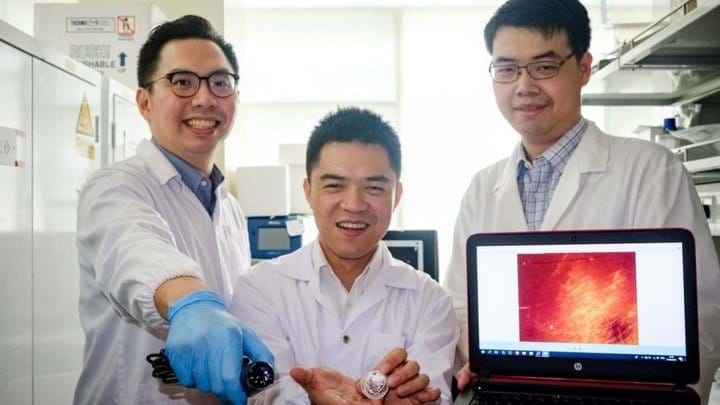Nanoparticles for non-invasive scar detection

NANOPARTICLES which emit fluorescent signals in the presence of scar cells could be used for non-invasive early detection of scarring.
Assessing how scars will develop following surgery or a burn is currently challenging and is typically done using biopsies, which can be painful, can lead to additional scarring, and carry the risk of infection. In addition, certain skin diseases are identified by visual inspection of scarring, at which point the scars are already mature.
Researchers have now developed nanoparticles that can predict whether a wound is likely to lead to excess scarring such as keloids, a type of scar caused when the collagen used in wound repair overgrows and can produce a lump many times the size of the original scar. If scarring is detected early on, doctors can take preventative action to reduce scar formation, such as applying silicon sheets to keep a wound flat and moist.
Gold nanoparticles are coated with tiny DNA strands to create NanoFlares, which can be administered to a wound via a cream. After 24 hours, a handheld fluorescent microscope is used to look for fluorescent signals coming from the interaction between the nanoparticles and a scarring biomarker. If no scarring biomarker is present, the nanoparticles remain inactive.
"When our bioengineered nanoparticles are applied on the skin, they will penetrate up to 2 mm below the skin surface and enter scar cells," said Xu Chenjie, assistant professor at Nanyang Technological University’s school of chemical and biomedical engineering. "Upon binding with a specific tell-tale gene released by the scar cells, smaller DNA spikes are knocked loose and light up under the microscope like little light flares. The more flares we see, the more scarring activity there is."
NanoFlares have previously been used for biomarker detection, but this is the first time that they have been able to penetrate the skin to offer a non-invasive diagnosis. NanoFlares have the potential to allow real-time disease monitoring, and as the DNA sequences are interchangeable, they could be engineered to target different biomarkers and identify other diseases such as skin cancer.
Nature Biomedical Engineering http://doi.org/csf7
SLAS Technology http://doi.org/csf8
Recent Editions
Catch up on the latest news, views and jobs from The Chemical Engineer. Below are the four latest issues. View a wider selection of the archive from within the Magazine section of this site.




